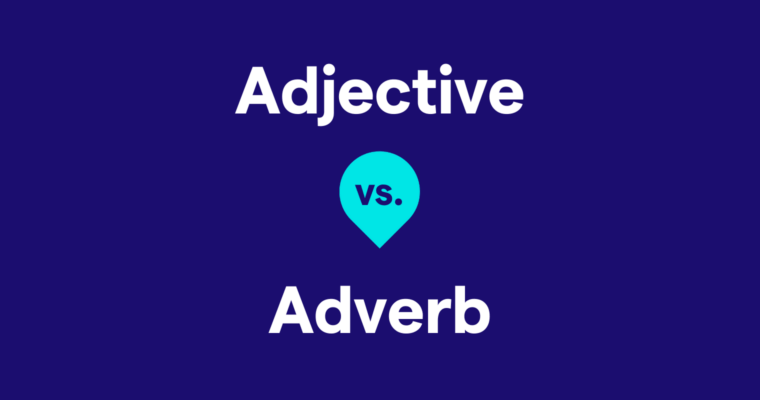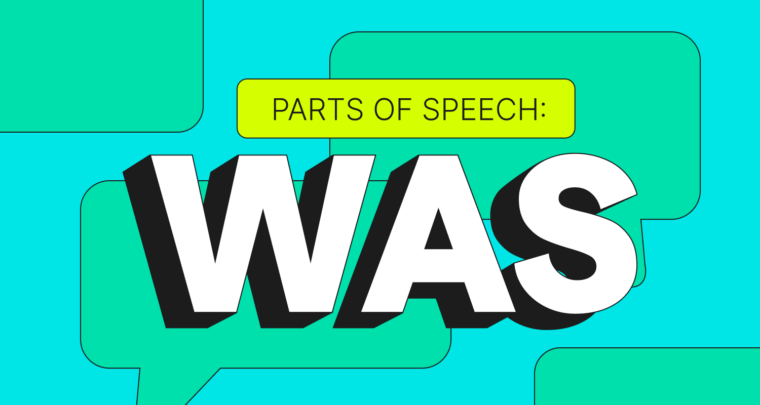
- An adjective is a word that describes nouns, such as large or beautiful, and an adverb is a word that describes verbs, adjectives, and other adverbs, such as silently or really.
- Many adverbs are formed by adding -ly to adjectives (quick → quickly), but some words remain the same in both adjective and adverb forms, such as fast (“a fast car” vs. “He runs fast”).
- Linking verbs can take either adjectives or adverbs, depending on whether they describe the subject or the action.
- Adjective phrases work the same way as single-word adjectives by adding more detail (Adjective phrase: “the house with the red door” vs. single adjective: “the red house”).
- Some adjectives and adverbs look similar but have different meanings, such as the adjective good and the adverb well (“She is a good writer” vs. “She writes well”).
Below, we’ll explain the difference between an adjective and an adverb. Using plenty of adjective and adverb examples, we’ll discuss how and when to use each correctly.
Table of contents
What’s the difference between an adjective and an adverb?
Adjectives vs. adverbs and linking verbs
How to turn adjectives into adverbs
Identical adjective and adverb examples
What’s the difference between an adjective and an adverb?
Adjectives and adverbs are often confused in grammar because they’re both words that describe other words. The difference between adjectives and adverbs is which types of words they describe.
Adjectives describe only nouns, including pronouns. So, if you have a noun like dog, you can give more details about it by adding adjectives.
Sometimes, multiple words work together to describe a noun. This is called an adjective phrase, and you can treat these groups of words the same as individual adjectives.
Adverbs commonly describe verbs. They add details to show how an action is done, such as with the adverbs quickly or slowly, or the frequency of the action, such as with the adverbs often or sometimes.
Additionally, some adverbs like really or very can also describe other adverbs. When adverbs are used like this, they usually describe the degree of intensity or frequency.
Likewise, adverbs can also describe adjectives and specify the degree of intensity or frequency.
In the last example, the adjective large describes the noun man, and the adverb very describes the adjective large. Similarly, the adverb really describes the adjective small, which describes the noun chair.
How to tell adjectives from adverbs
The best way to tell the difference between an adjective and an adverb is to identify the word it describes:
- If the word being described is a noun, it’s an adjective.
- If the word being described is a verb, adjective, or another adverb, it’s an adverb.
Sometimes, you can use a shortcut to tell the difference between adjectives and adverbs. If you see a word with -ly at the end, it’s usually an adverb.
Be careful, though, because this isn’t always true. For example, words like curly, elderly, friendly, and lovely are all adjectives that end in -ly. However, most words ending in -ly are adverbs; remembering this can help you distinguish between adjectives and adverbs with the same root word.
Let’s use the adjective calm and the adverb calmly to demonstrate the difference:
Adjectives vs. adverbs and linking verbs
When it comes to adjectives vs. adverbs, a lot of confusion comes from linking verbs, which do not show an action but rather share more details about the subject.
The most common verb, be, is a linking verb. So when we say, “She is the mayor,” the noun mayor describes the subject, which is the pronoun she. Other common linking verbs include become and seem and sensory verbs like look, feel, and smell.
The challenge with linking verbs is that they can sometimes take either adjectives or adverbs. An adjective follows a linking verb when it describes the subject, while an adverb is used when it describes the action. This can easily lead to confusion, so you must be careful which one you use in writing, as it can change the meaning.
Let’s look at two examples, one with the adjective bad and the other with its adverb counterpart, badly.
In this example, we use the adjective bad, so it describes the subject, the noun lizard. Here, the lizard has a bad odor, so don’t stick your nose too close to it!
In this example, we use the adverb badly, so it describes the action, the verb smell. Here, the lizard has trouble smelling; maybe it has a cold, and its nose is stuffed up.
How to turn adjectives into adverbs
Because adjectives and adverbs are closely related, some root words can be used for both. That makes it easy to turn some adjectives into adverbs and vice versa.
Here are some examples of how to form adverbs from adjectives.
For many adjectives, all you have to do is add -ly to the end to make an adverb.
| Adjective | Adverb |
| loud | loudly |
| perfect | perfectly |
| hopeful | hopefully |
If the adjective ends in a -y, drop the -y and add -ily to make an adverb.
| Adjective | Adverb |
| easy | easily |
| happy | happily |
| lucky | luckily |
If the adjective ends in -tle or -ble, replace the -e with a -y to make an adverb.
| Adjective | Adverb |
| gentle | gently |
| comfortable | comfortably |
| terrible | terribly |
If the adjective ends in -ic, add -ally to make an adverb.
| Adjective | Adverb |
| specific | specifically |
| tragic | tragically |
| energetic | energetically |
However, keep in mind that not all adjectives follow these rules. Some words can be both adjectives and adverbs without changing anything, which we discuss in the next section.
Adjectives that end in -ly, like silly, ugly, or friendly, don’t have acceptable adverb counterparts. In these cases, you must use a synonym or phrase the sentence differently.
Moreover, the common adjective good has an irregular adverb counterpart: well. This can lead to some accidental mistakes, so always be aware of which type of word you’re describing.
Identical adjective and adverb examples
There’s another source of potential adjective vs. adverb confusion: Some words stay the same whether they’re used as an adjective or an adverb. It can be challenging to figure out how the words below are used, so pay special attention to the words they describe to determine whether they’re adjectives or adverbs.
- hard
- fast
- rough
- straight
- wrong
- far
- lively
- left, right
- inside, outside
- early, late
- daily, weekly, monthly, yearly
- first, second, third, etc.
Adjective vs. adverb FAQs
What are adjectives and adverbs?
Adjectives, such as big or smart, are words that describe nouns. Adverbs, such as quickly or very, are words that describe verbs, adjectives, or other adverbs.
Why are adjectives and adverbs easily confused?
Aside from both words starting with ad-, adjectives and adverbs both represent words that describe other words. Both adjectives and adverbs are used to add more details to a sentence beyond simply who did what.
How are adjectives and adverbs different?
The main difference between adjectives and adverbs is the types of words they describe: Adjectives describe nouns and adverbs describe verbs, adjectives, and other adverbs. Moreover, most (but not all) adverbs end in -ly, although a few adjectives also end in -ly.
Can an adjective also be an adverb?
Yes, some words function as both adjectives and adverbs without changing form, such as fast (Adjective: “He is a fast runner,” Adverb: “He runs fast”).
What are some common mistakes with adjectives and adverbs?
A common mistake is using an adjective instead of an adverb, like saying, “She sings good” instead of “She sings well.”





